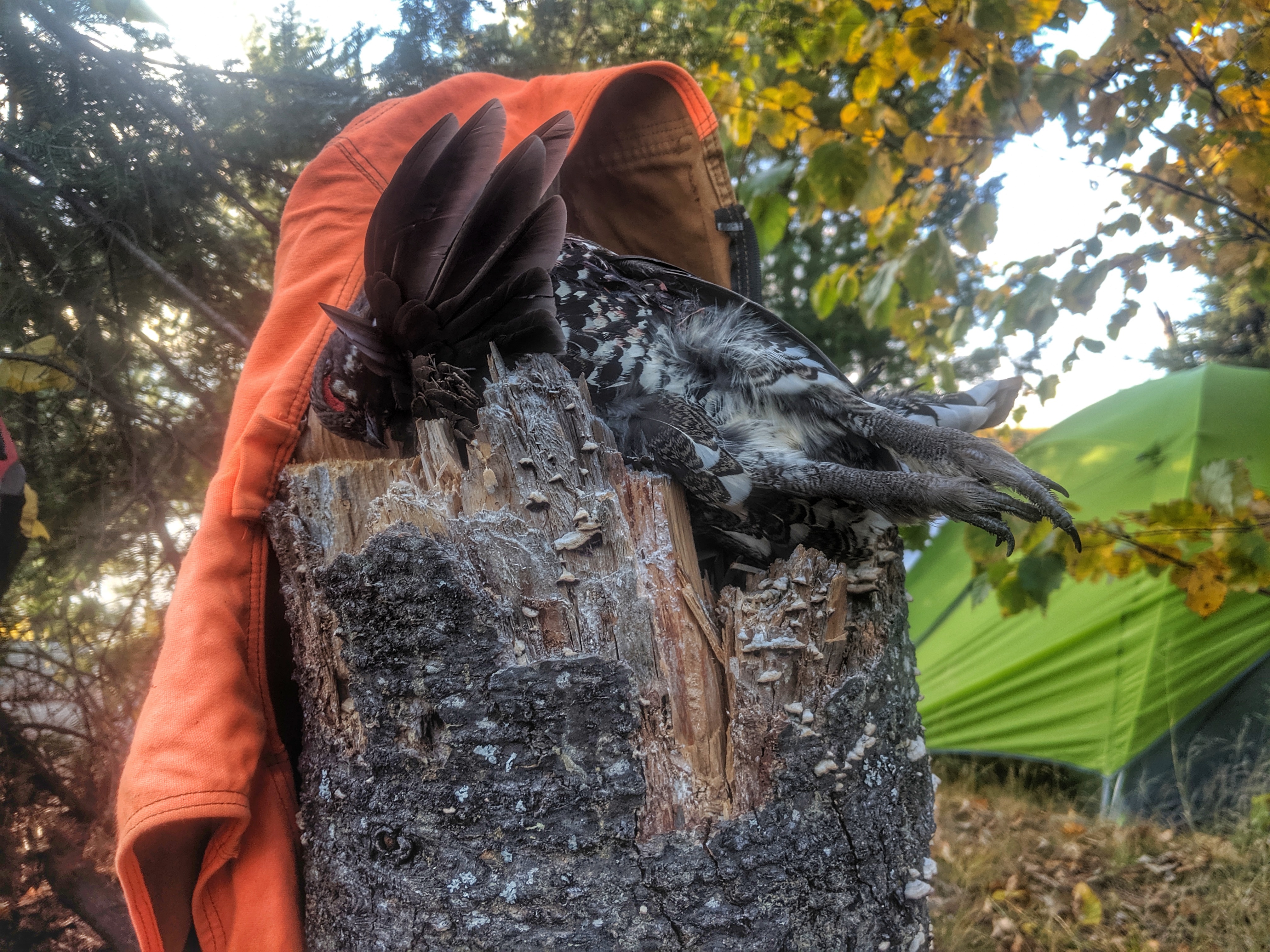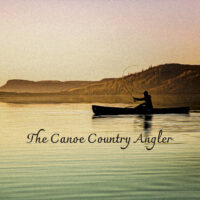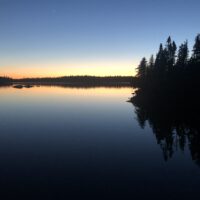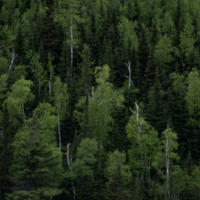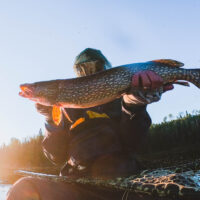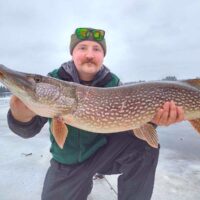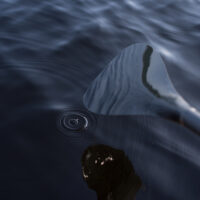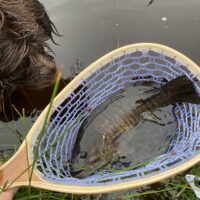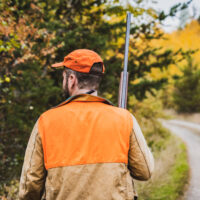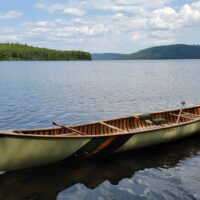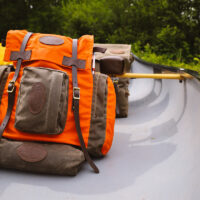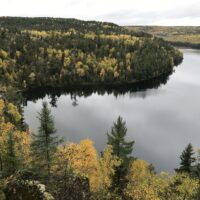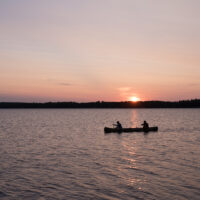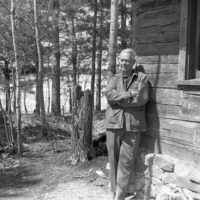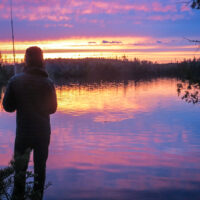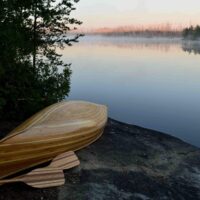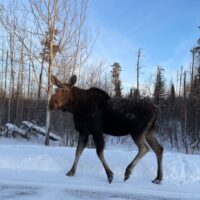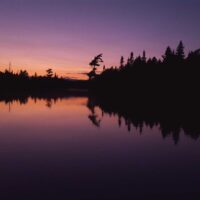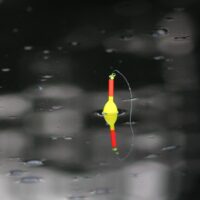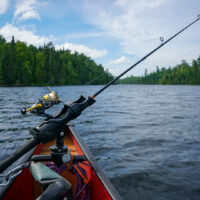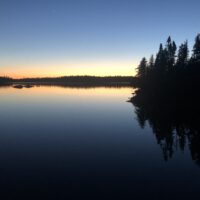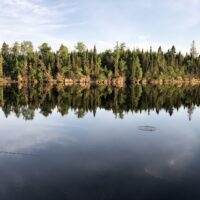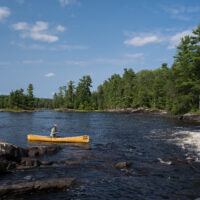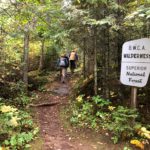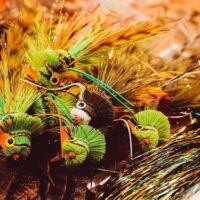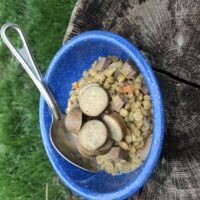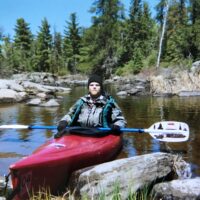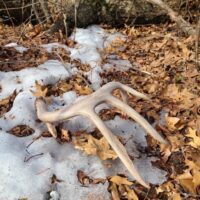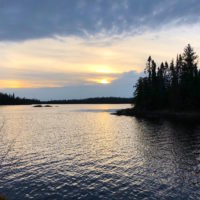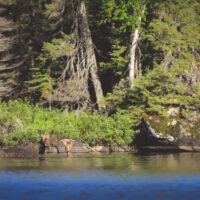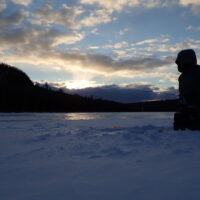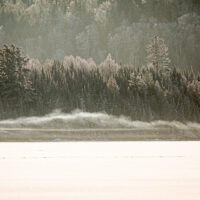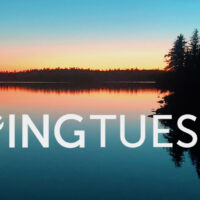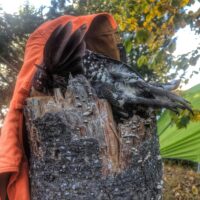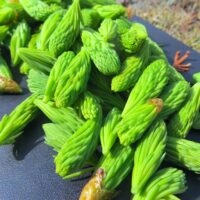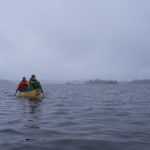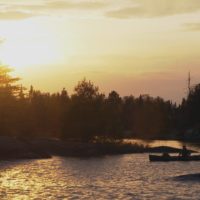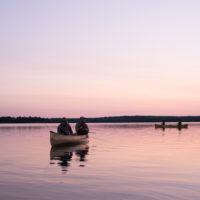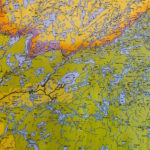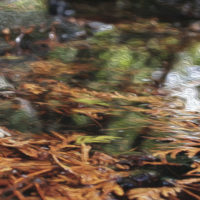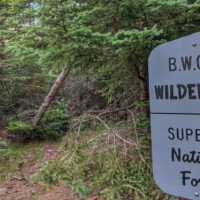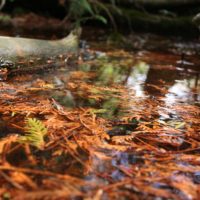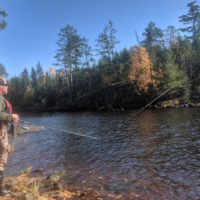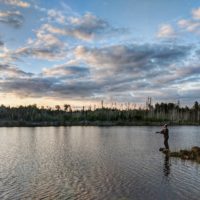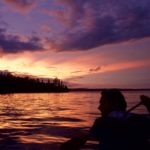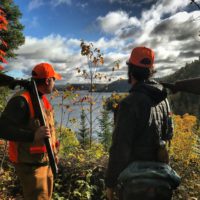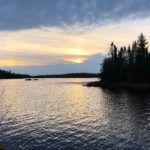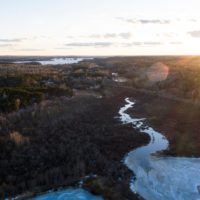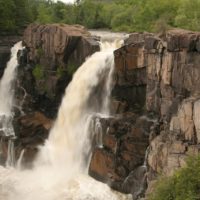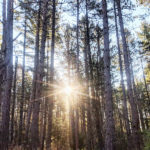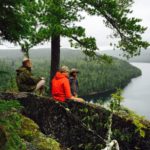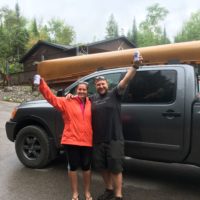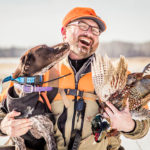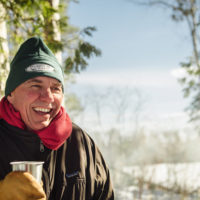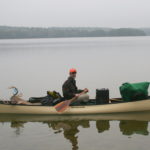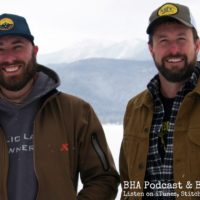Grouse Hunting in the Boundary Waters Canoe Area Wilderness
September 28, 2020 11:56 amPosted by: Jake Dahlke, Sportsmen BWCA
This blog was written with the collaboration of our partners at the Ruffed Grouse Society and American Woodcock Society. Learn more at ruffedgrousesociety.org.
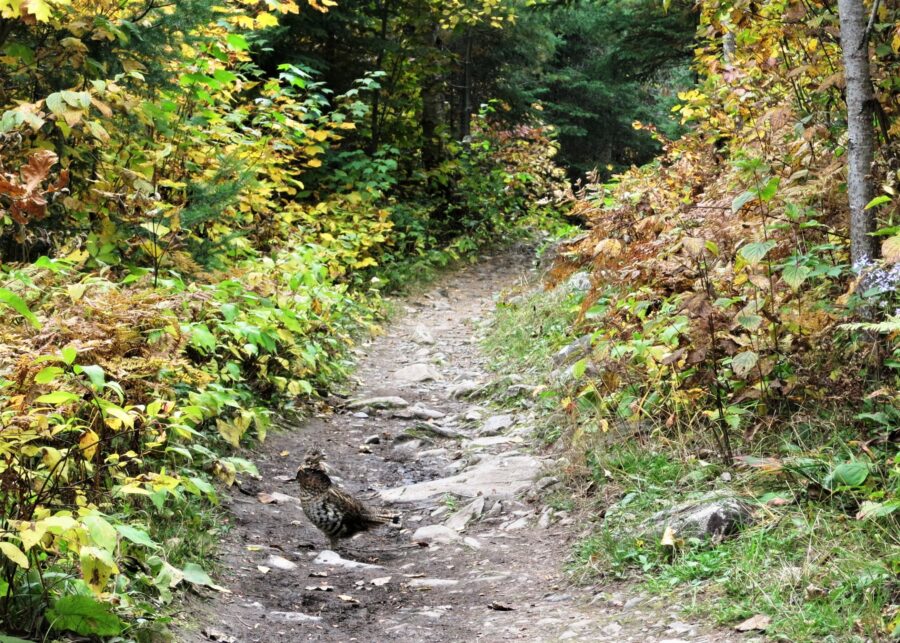
Photo by Evan Koch
As an avid hunter from Minnesota, fall is without a doubt one of the best times of the year. There is always that one day each year that kicks off the fall season. It brings a certain smell and chill to the air that announces itself as subtle, yet as unmistakable, as the sound of a deer creeping through the woods on the opening day of hunting season. As soon as that day hits, and quite honestly much before, I start planning my fall season’s hunting and fishing pursuits. This year, I want to try out something new: grouse hunting in the Boundary Waters. I have spent a small bit of time in the autumn woods chasing grouse. However, my experience is still rather minimal, and I have never hunted as far north as the BWCA. That said, I did a little research and reached out to a few pros to get an edge before I make any trips. In this article, I will outline a bit of what I’ve learned!
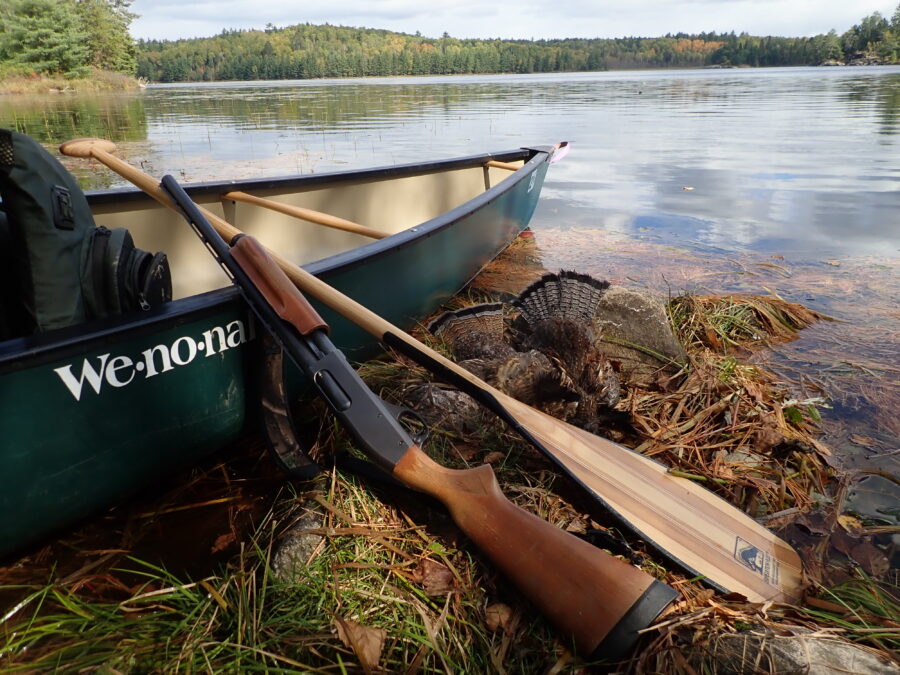
Photo by Jacob Bendel
Choosing a Firearm and Gear
When packing for this trip, the biggest decision you’ll have to make in regards to gear is which firearm and ammunition to bring. This can be a heated topic, but from what I’ve gathered a 20 or 12 gauge shotgun is most ideal. There are several benefits to choosing a 20 gauge, but when I make the trip I’ll be toting my trusty old 12. Successful BWCA hunter and Sportsmen for the Boundary Waters supporter, Jacob Bendel, will often bring a 12 gauge on his trips so that he can take advantage of both waterfowl and grouse opportunities.
“On my first fall trip, I brought a 20 gauge expecting to pursue grouse and maybe get a chance at some ducks. We saw a ton of ducks that trip, but I was struggling to cleanly knock them down with the 20 gauge. I told myself I would always bring a 12 gauge in the future if I wanted to shoot ducks and be a little overpowered for grouse” said Bendel. With that, I encourage you to use non-toxic shot when hunting in the Boundary Waters. There is simply too much water around and the potential negative impacts of using lead shot are too risky. Also, it is illegal to take waterfowl with lead shot, or while you have it in your possession.
Aside from choosing the firearm that best suits your needs, also remember to pack a sharp and reliable knife so that you’re ready to clean and prepare your harvest. Odds are you won’t be packing any meat out with you. You’ll need a small game or sports license to hunt grouse. You’re likely to also encounter American woodcock, as they use very similar habitats. Since woodcock are a migratory species, you’ll need to be Harvest Information Program (HIP) certified to hunt them, which you’ll likely have taken care of if you also plan to hunt waterfowl. For clothing, standard BWCA backpacking clothing and equipment will work just fine, but consider wearing durable outer layers if you plan to spend time off-trail looking for those pesky birds. Don’t forget to pack and wear the proper blaze orange requirements while hunting. Ruffed grouse and woodcock hunters are required to wear at least one visible article of clothing above the waist that is blaze orange. This could be a hat, jacket or hunting vest. Finally, consider packing knee-high rubber boats to keep your feet out of the cold autumn water, as recommended by Bendel.
Finding Huntable Areas in the BWCA
The one thing that is obvious about hunting grouse in the Boundary Waters is that it isn’t easy. Thick patches of wilderness with no logging makes finding birds a daunting task, even for those with experience. One of the most important steps you can take to maximize your success is choosing areas that have the highest odds of holding healthy and huntable grouse populations.
I spoke with Bob St. Pierre, VP of Marketing and Communications of Pheasants Forever, and asked what he would look for in terms of prime areas to focus on for a hunt of this nature. He suggested focusing on successional forests, with 10 to 15-year old aspen being ideal.
“Target areas that have had fires or significant blowdowns around 2000 to 2010. Consider the Ham Like Fire of 2007 toward the end of the Gunflint Trail. That area is coming into prime grouse habitat”, said St. Pierre.
To complement Bob’s line of thought, Shawn Perich, Author at Northern Wilds magazine, suggested focusing on areas less congested and less traveled, such as the Border Route Trail and the Powwow Trail. The Border Route is typically less trafficked by people, resulting in less pressured animals and safer hunting conditions. The Powwow Trail is an area of regrowth due to the Pagami Creek Wildfire, making it another strong candidate for prime and huntable grouse habitat.
Brent Rudolph, Chief Conservation and Legislative Officer at the Ruffed Grouse Society, concurred with these recommendations to focus on areas of previous fires, blowdown, and edge habitat. “Grouse don’t exclusively use young forest habitats, but that’s where you’ll most often find them at this time of year. In many other places, grouse thrive best where active, sustainable forest management is occurring, but the Boundary Waters is a big enough place that you can still find pretty sizable areas affected by these natural disturbances.”
Having previous experience in the Boundary Waters also helps, as you may have already identified spots with healthy numbers of grouse!
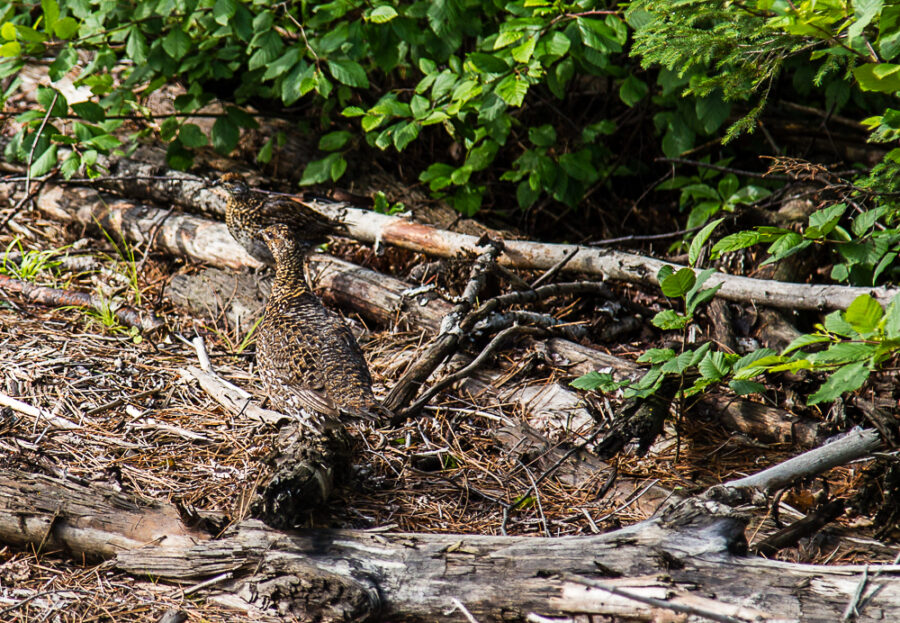
Photo by Jamie Carlson
Strategies and Tactics
Once you’re on the trail and in pursuit of Boundary Waters grouse, finding birds is the next greatest challenge. Of course, I’ve never hunted the BWCA, so I also had to lean on expert voices for some in-the-field strategy. Both Jacob Bendel and Bob St. Pierre made a point of keeping an eye out on portages. Portage trails create natural edges that grouse tend to gravitate towards. If you’re in a group, Bendel recommended sending someone down the trail with a gun and a pack first. If you’re flying solo or double portaging, take the boat second so you can spot any birds on the first portage. It might go without saying, but always be extra careful when hunting near or along portages. Never shoot towards an area where there might be people and never take a questionable shot. Bendel also mentioned that oftentimes he won’t even shoot at an animal if he knows other people outside of his group are in the area. He does this to respect the peace and quiet of others, a very sportsmanlike practice that we should all consider.
No matter where you hunt grouse, you have to keep a sharp eye out and look closely to the ground. Chasing a drumming bird is the ideal scenario, but one that often doesn’t present itself. Rudolph noted that males drum most often in the spring, but some drumming can be heard most any time of year, if you know what to listen for. Especially at a distance, the thrumming, drumming noise can sound like a tractor or truck engine starting up – at least in the Boundary Waters, there is a lot less of such noises actually occurring in the background! You also can’t anticipate easily flushing birds.
“They are often more willing to hold tight if you are on a trail versus busting off-trail. If you are walking off-trail, I would recommend frequent stops to look and listen. Always stop in a spot where you can reasonably shoot. Grouse usually get antsy if you stop moving or once you start again” noted Bendel from many previous experiences.
As you work your way through the woods, you have to be ready. In my opinion, a moving grouse is one of the hardest targets there is. Most of the time when I have hunted them I’ve been startled and caught off guard by their flush. By the time my barrel is raised, they’re often gone (a rookie move, I know). As a pheasant and all-around bird hunting expert, Bob St. Pierre even acknowledges the difficulty in placing a good shot on a grouse.
“You’re rarely going to get a clean window to shoot a grouse like you would a pheasant on the prairie. Keep your shotgun ready and be cognizant of shooting lanes with safety in mind all the time”, heeded St. Pierre in our conversation.
A final tactic I found interesting came during my phone call with Shawn Perich. Shawn recommended using either the portage trail or lakeshore as a reference point and making a wide loop from one end of the trail or lakeshore to the other. This will allow you to cover ground while staying on your course.
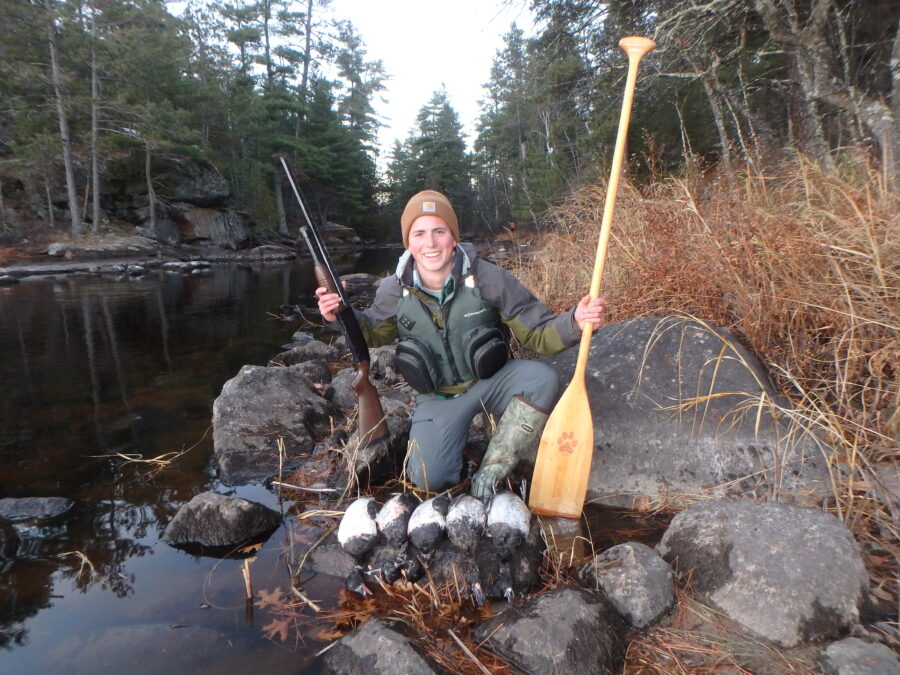
Photo by Jacob Bendel
Grouse Populations in the Boundary Waters Area
The ruffed grouse is the most popular game bird in Minnesota, and the state often leads the nation in the number of ruffed grouse harvested by hunters, with most of the harvest coming from northern portions of the state. The Minnesota DNR coordinates wildlife staff and cooperating federal, tribal, and county biologists to complete ruffed grouse drumming surveys each spring. Some surveys were not completed this year due to work restrictions in response to the COVID-19 pandemic, but surveys were able to be completed in the northern portion of the state while social distancing.
Drumming counts in the northern survey regions this spring were similar to or down from last year. Rudolph noted that, although the survey is more reliable at tracking long-term trends than precisely monitoring year-to-year differences, all across the Great Lakes region and confirmed by the long-term trend in these Minnesota surveys, ruffed grouse populations cycle between lower and higher levels at approximately 10-year intervals. The survey trends indicate the last cycle peak was in 2017, suggesting ruffed grouse in Minnesota are currently in the declining phase of the 10-year cycle.
“Providing ideal habitat can kind of boost both the ‘floor’ and ‘ceiling’ of those 10-year cycles,” said Rudolph, “but the underlying ecology of those fluctuations is still one of nature’s great mysteries. Outside of the Boundary Waters Canoe Area Wilderness but still within Lake, Cook, and St. Louis Counties, we’ve actually been accomplishing a lot of great grouse habitat improvement as a partner on the Moose Habitat Collaborative, since moose are another iconic northwoods species that utilizes much of the same habitat that benefits grouse. This work has been financially supported by the Lessard-Sams Outdoor Heritage Council, with numerous land management agencies, tribal authorities, other non-profit partners, and research efforts through the University of Minnesota Duluth all pitching in. We took a bigger role in submitting a recent $5.624 million application for Phase IV of this effort, and are looking forward to October 1, when we’ll hear a funding recommendation on this proposal.”
A Resource We Can’t Take for Granted
The Boundary Waters is an incredibly expansive and beautiful area, and I can’t wait to experience my first BWCA hunt. It is mind-blowing to me that, as public landowners, we can access the BWCA and use it as a hunting resource. There are few places left where you can cut loose and hunt freely without the barriers of civilization. There are no roads, houses, buildings, shops, or anything else that represents human activity. Even out West, where there are millions of acres of public hunting land, you still can’t achieve the same solitude and natural setting of which you can in the Boundary Waters. As sportsmen and sportswomen, we can’t overlook this privilege. We understand better than anyone else how lucky we are to share such a pristine and bountiful resource. If we don’t use our voices to stand up and support the preservation of this wild place, future generations won’t be able to walk the Boundary Waters woods with a keen eye and a shotgun in search of ruffed grouse, amidst a colorful canvas of autumn leaves and bright blue lakes.
I urge you to sign the Sportsmen for the Boundary Waters petition in support of H.R. 5598, the Boundary Waters Wilderness Protection and Pollution Prevention Act. This is a small, yet impact step you can take to make sure your voice is heard and that you are doing your part to help protect not only the Boundary Waters but the wild game and other species that call it home.
“Bird hunters looking for lots of shooting and an opportunity to bag a limit of ruffed grouse shouldn’t go into the Boundary Waters. However, if you’re looking for world-class scenery as a backdrop for one of the most memorable bird hunts of your life with a legit opportunity to bag a bird or two, then the BWCA is for you.”
-National Board Chair of Sportsmen for the Boundary Waters and Vice President of marketing and communications at Pheasants Forever.
Categorised in: Blog, Hunting, Partnerships, Uncategorized

